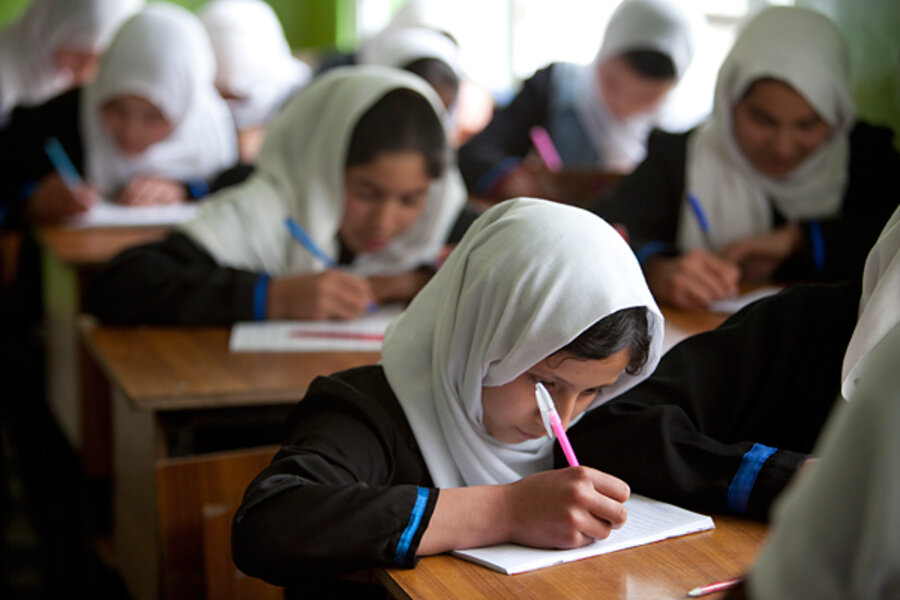Afghan girls embrace school
Loading...
| Kabul, Afghanistan
You see them all over town: girls wearing white head scarves over black clothes – their school uniform. It's a welcome sign of progress. Under Taliban rule, fewer than 50,000 girls were in school. Today, 3.2 million attend. Two sessions a day are needed to accommodate all the students.
At Speena Adi school, 3,800 girls from first to ninth grade crowd into classrooms for four hours each day. They are the afternoon session in a building that was a boys-only high school during the Taliban years (1996-2001).
There is no electricity in the building, leaving hallways dark and some classrooms quite dim, yet pupils seem enthusiastic to learn. Occasionally the girls go outside to the water pump to get a drink of water or wash their hands.
Compared with other Afghan schools, Speena Adi is relatively well staffed. Even as more children come to school, many challenges remain: overcrowding; inadequate teacher pay; a paucity of school supplies; and, most distressing, hundreds of incidents of violence against schools, teachers, and even students by Taliban agents.
• Melanie Stetson Freeman is one of the Monitor's staff photographers.









